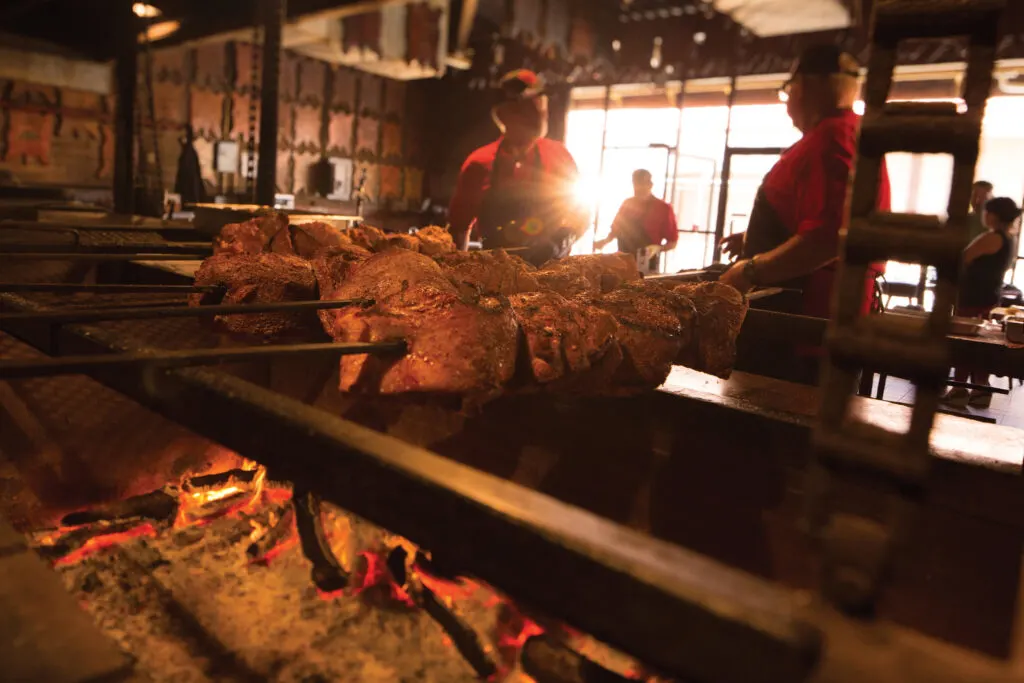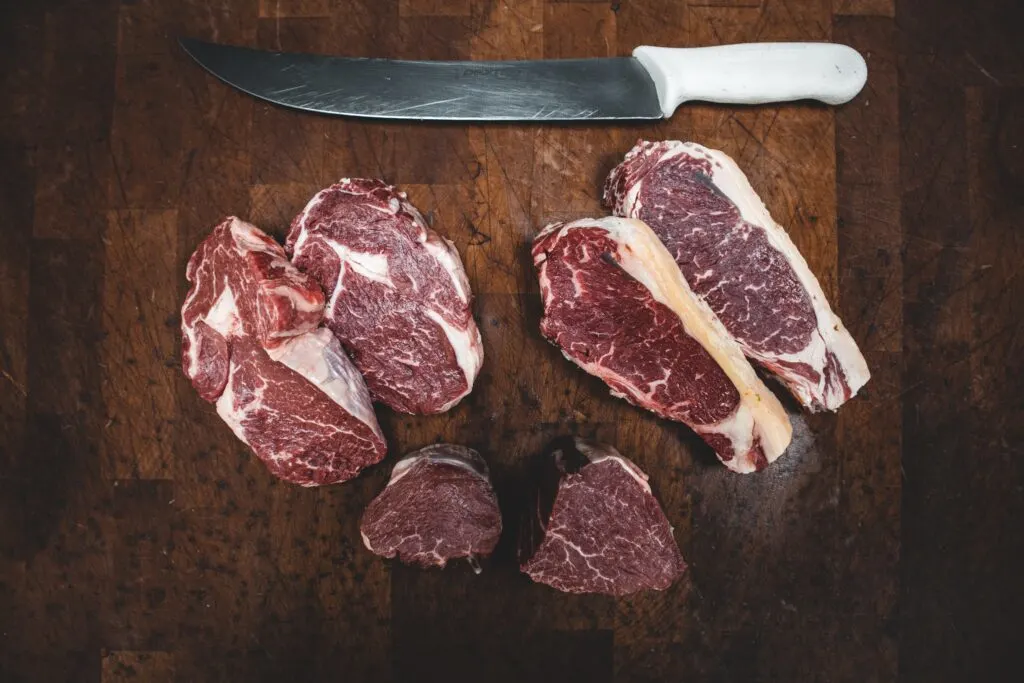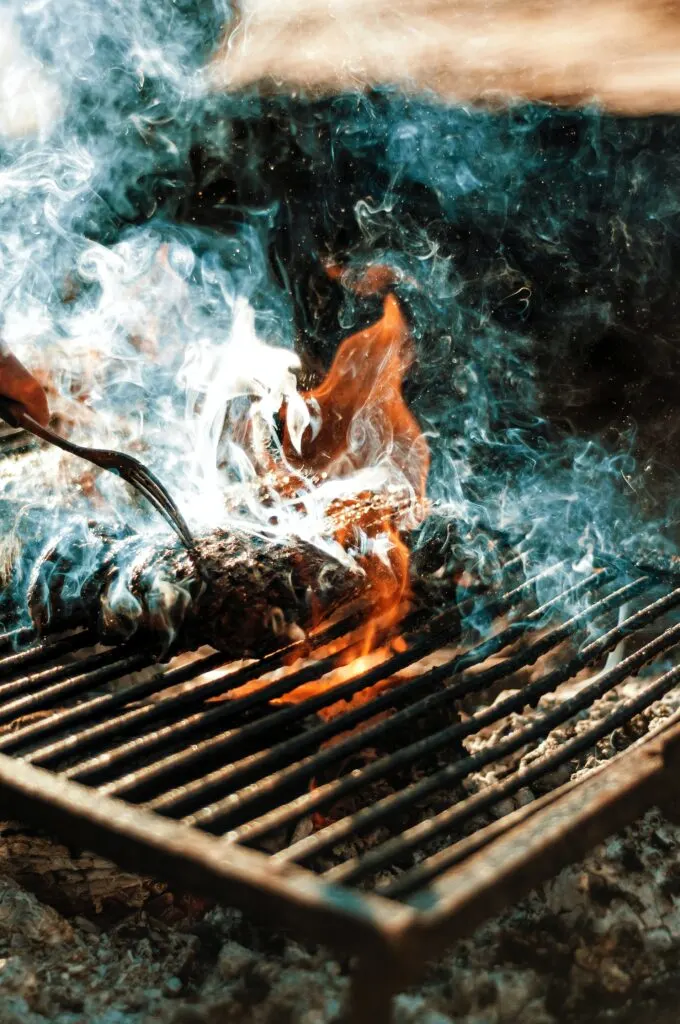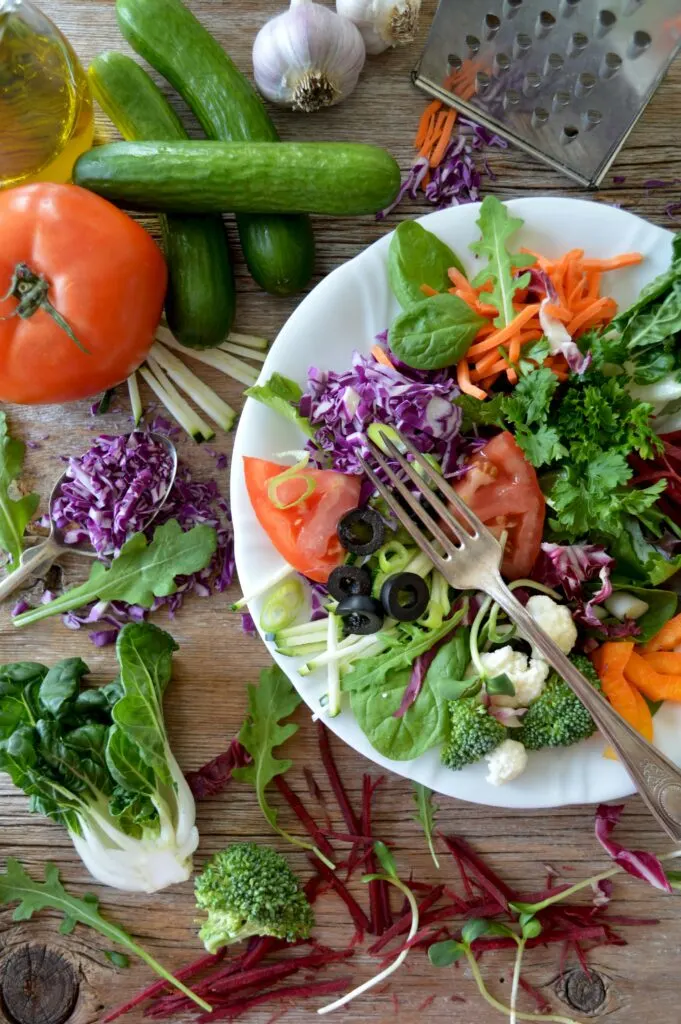Santa Maria-style barbecue is a regional culinary tradition with deep roots in the Santa Maria Valley of Santa Barbara County on the Central Coast of California. With origins dating back to the mid-19th century, this beloved method of barbecuing is considered a mainstay of California's culinary heritage. The unique combination of flavors and cooking techniques has made Santa Maria-style barbecue popular not only in the region but also throughout the state and beyond.

At the heart of this barbecue style is the tri-tip, a specific cut of beef that is seasoned with a signature blend of spices and grilled over red oak wood. Aside from the delicious meat, Santa Maria-style barbecue also features an array of complementary dishes, such as pinquito beans, tangy salsa, fresh green salads, and grilled French bread. These flavorful accompaniments enhance the overall dining experience and make Santa Maria-style barbecue a well-rounded, satisfying meal.
Santa Maria Style Barbecue: A Taste of California's Central Coast Tradition
History and Authenticity
Santa Maria-style barbecue has a rich history that dates back to the mid-19th century. This culinary tradition originated in the Santa Maria Valley, when local California ranchers hosted Spanish-style feasts each spring for their vaqueros, or cowboys. They barbecued meat over earthen pits filled with hot coals of local coast live oak.
Over time, the tradition evolved as locals in the Santa Maria Valley began to string their beef on skewers and cook it over the hot coals of a red-oak fire. This distinct cooking method has been passed down through generations, preserving its authenticity over time.
In the 1950s, Santa Maria-style barbecue further developed when a local butcher named Bob Schutz invented the tri-tip, a triangular bottom sirloin cut that quickly became a mainstay of this cuisine. This cut of beef, along with top-block sirloin, has come to define the unique flavors of Santa Maria-style barbecue.

The history and authenticity of Santa Maria-style barbecue have not only been preserved by the local community, but also have gained recognition beyond its geographic boundaries. The 40th President of the United States, Ronald Reagan, was known to be a fan of this culinary style. His fondness for this cuisine served to further popularize Santa Maria-style barbecue both nationally and internationally.
Today, Santa Maria-style barbecue continues to be cherished for its deep roots in history and its unique, authentic flavor. This long-standing culinary tradition is a testament to the enduring appeal and significance of regional food heritage.
Santa Maria Style Barbecue Recipe
Santa Maria Style Barbecue is a traditional and delicious feast that originated in California. This savory dish primarily features tri-tip or sirloin top-block, seasoned with a simple blend of salt, pepper, and garlic. The main highlight of this dish is the smoky flavor imparted by grilling the meat over an open flame.
To prepare the perfect Santa Maria Style Barbecue, start by choosing a high-quality tri-tip or sirloin top-block, about 2 to 3 pounds. Trim off any excess fat on the meat, leaving a thin layer for added flavor during cooking. Next, combine salt, pepper, and garlic to create a seasoning mix. Rub the mixture generously over the entire surface of the meat, ensuring every part is coated evenly.
Before grilling the meat, preheat your grill to a medium-high temperature. Lightly coat the grill grates with oil to prevent the meat from sticking. Once the grill is heated, place the seasoned tri-tip or sirloin on the grill and cook it for about 30 to 35 minutes, turning it occasionally for even cooking. The meat should reach an internal temperature of 130°F for medium-rare or 140°F for medium.

While the meat is grilling, it's time to prepare the mouthwatering side dishes that traditionally accompany Santa Maria Style Barbecue. These include Pinquito beans, tangy Santa Maria salsa, a simple green salad, and crusty French bread. Remember to soak the Pinquito beans overnight and cook them according to their specific instructions.
Once the meat has reached the desired temperature, remove it from the grill and let it rest for about 10 minutes. This allows the juices to redistribute, ensuring a more tender and juicy eating experience. After the resting period, slice the meat into thin, mouthwatering portions.
Serve the sliced tri-tip or sirloin along with the Pinquito beans, tangy salsa, fresh green salad, and warm French bread dipped in melted sweet butter. With this delectable Santa Maria Style Barbecue recipe, you'll treat yourself and your guests to an unforgettable culinary experience.
The Art of Grilling
Santa Maria style barbecue is an age-old tradition that has delighted many over the years. The perfect blend of smoke, fire, and flavorful spices creates a truly unique and delectable meal. In this section, we'll explore how Santa Maria style grill masters make use of key elements such as the grill, coals, red oak fire, and quality beef cuts like tri-tip and top sirloin.
The first essential step in mastering the art of grilling is choosing the right grill. A Santa Maria-style grill allows you to adjust the height of the grates over the coals, ensuring even and controlled cooking. To achieve the signature Santa Maria flavor, it's important to use coals composed of red oak, which provides a unique, smoky taste that complements the beef.
Preparing the meat is another crucial aspect of Santa Maria style grilling. Use high-quality cuts like beef tri-tip or top sirloin to ensure a tender and delicious result. Seasoning is key to any great barbecue—be sure to generously rub the meat with a simple yet effective blend of salt, black pepper, and garlic salt. This allows the savory flavors to penetrate the meat and fully harmonize with the red oak smoke during the grilling process.

As the meat cooks on the grill, pay careful attention to the smoke. This is where the red oak fire really shines and imparts its unique, smoky notes into the beef. Managing the heat levels is crucial—too high, and the meat may become charred or dried out. On the Santa Maria-style grill, you can easily adjust the height of the grates above the coals to maintain an optimal temperature and ensure even cooking.
In summary, the art of grilling Santa Maria style barbecue requires mastering a few critical elements: choosing the right grill, using red oak coals for an authentic flavor, selecting high-quality beef cuts, seasoning the meat appropriately, and carefully managing the red oak fire to impart a delicious smoky taste. Once these elements are perfected, you'll be well on your way to becoming the ultimate Santa Maria style grill master.
Pinquito Beans and Salsa
Santa Maria style barbecue is known for its delicious tri-tip and delightful side dishes. One of these sides is the famous Pinquito Beans, which are essential in completing this tasty meal. Pinquito beans are small, pink beans that natively grow on the Central Coast. These beans are often slow-cooked with bacon, ham, spices, and tomato puree, giving them a rich and hearty flavor profile.
Preparing pinquito beans involves rinsing them, removing any stones, and soaking them overnight. This process helps in softening the beans and enhancing their flavor when cooked with other ingredients like diced bacon, ham, garlic, tomato puree, and red chile sauce. To bring out their smoky taste, these beans may also be seasoned with ancho chili powder, and either Anaheim or Pasilla chili peppers.
Another must-have side dish in Santa Maria style barbecue is the tangy Santa Maria style salsa. This salsa perfectly complements the scrumptious pinquito beans and smoky tri-tip, adding marvelous flavors to each bite. To make this salsa, fresh ingredients like tomatoes, onions, cilantro, garlic, and jalapeño peppers are combined with vinegar, salt, and pepper to create a chunky and appetizing mixture. Sometimes, lemon juice is also added for an extra tangy flavor.
Some variations of Santa Maria style salsa may incorporate additional ingredients like bell peppers, green onions, or even pineapple, for a twist on the classic recipe. Regardless of the specific ingredients used, this salsa contributes a vibrant and refreshing taste to the overall Santa Maria style barbecue experience.
In conclusion, Pinquito Beans and tangy Santa Maria style salsa are essential elements of a Santa Maria style barbecue. These sides wonderfully complement the smoky and tender tri-tip, creating a memorable dining experience bursting with flavor. By including these dishes in your barbecue, you can enjoy an authentic taste of Central Coast cuisine.
Santa Maria Style Seasoning
Santa Maria style seasoning is a key component in the traditional Santa Maria style barbecue. It is a simple yet flavorful blend of spices, which brings out a unique taste in the grilled meats. The main ingredients in this seasoning blend are salt, black pepper, and garlic powder or garlic salt.
The simplicity of Santa Maria style seasoning allows the flavors of the barbecued meat to shine. This seasoning is typically used to marinate tri-tip, a cut of beef that is particularly popular in Santa Maria style barbecue. Given its versatility, the seasoning can also be used on other cuts of meat, such as chicken or pork.
To make Santa Maria style seasoning at home, you can easily mix together equal parts of salt, black pepper, and garlic powder or garlic salt. You can even add a pinch of sugar if you prefer a slightly sweeter flavor profile. Be sure to store the mixture in an airtight container, and keep it in a cool, dry, and dark place for up to three months.
When preparing the meat for grilling, generously coat all sides of the meat with the seasoning blend, ensuring an even distribution of flavors. The salt in the seasoning not only adds flavor, but it also aids in tenderizing the meat during the cooking process.
In conclusion, Santa Maria style seasoning is an essential element in the classic Santa Maria style barbecue experience. With its simple yet delicious combination of salt, black pepper, and garlic powder or garlic salt, this seasoning elevates the taste of any grilled meat, making it a must-have addition to your next barbecue.
Bread and Salads
Santa Maria style barbecue is famous for its delicious side dishes that perfectly complement the main course. One of the most iconic sides is the buttery garlic bread. To make this mouthwatering accompaniment, chefs typically grill French bread and dip it in a sweet, melted butter mixture, adding an irresistible texture and flavor source.
In addition to the delectable garlic bread, Santa Maria style barbecue often includes a simple green salad. This salad, typically made with fresh, crisp greens, adds a refreshing element to the rich and savory barbecue dishes. The dressing for the salad is usually kept light, perhaps a simple vinaigrette, to maintain the focus on the barbecue flavors source.

These bread and salad side dishes are indispensable to the Santa Maria style barbecue experience. The buttery garlic bread adds a delightful crunch, while the simple green salad offers a palate-cleansing freshness. Both sides contribute their unique aspects, enhancing and elevating the flavors of the entire meal. By including these key components, you can create an authentic and unforgettable Santa Maria style barbecue event that will leave everyone craving for more.
Santa Maria Style Barbecue in Popular Culture
Santa Maria Style Barbecue has made a significant impact on popular culture over the years. This regional culinary delight from the Santa Maria Valley has garnered fans from both the Central Coast and beyond.
Influential figures such as President Ronald Reagan were known to be fond of Santa Maria style barbecue, regularly including it at events held during his presidency. This increased national awareness of the delicious and unique flavors typical of barbecue in that region of California.
Prominent local figures have played roles in promoting this scrumptious fare as well. Bob Schutz, a Santa Maria Valley native and barbecue expert, has contributed to the popularity and traditions of this culinary art. Schutz's passion and knowledge have undoubtedly helped Santa Maria style barbecue gain wide recognition and a dedicated fan base.

Many notable Central Coast establishments have been instrumental in spreading the word about this unique barbecue style. Restaurants such as the Far Western Tavern and the Hitching Post have become renowned for serving authentic Santa Maria style barbecue dishes, attracting locals and visitors alike. These restaurants carry on the cherished traditions of open pit grilling and red oak fire, which are critical components of this time-honored cooking style.
Through the influence of prominent figures, the passion of local enthusiasts like Bob Schutz, and the mouth-watering offerings of celebrated establishments, Santa Maria style barbecue has undeniably left its mark on popular culture. This Central Coast culinary gem continues to define a significant aspect of California's food scene and attract devoted fans in both California and throughout the nation.
Resources and Further Reading
If you're interested in discovering more about Santa Maria Style Barbecue, there are several resources available to help you learn about its history, recipes, and the best ways to enjoy this unique culinary tradition.
One valuable resource for enthusiasts is a Santa Maria Valley cookbook. This cookbook provides a comprehensive guide to traditional recipes used in Santa Maria barbecue. These recipes cover not only the main meats, but also include the essential accompaniments such as pinquitos beans, green salad, and local wine pairings.
If you're looking for guidance from experienced chefs, the Santa Maria Valley blog provides several tips and tricks on mastering the Santa Maria Style grilling techniques. Several local chefs contribute to this blog and share their expertise with readers.
Visiting a Santa Maria Style barbecue restaurant is an excellent way to experience the flavors firsthand. There are numerous establishments throughout the Santa Maria Valley that specialize in this delicious cuisine. Each restaurant provides its unique take on the signature recipes, and many of them have their generations-old (and flavorful-as-ever) spice rubs, as mentioned in this post about the secrets of Santa Maria Style grilling.
If you're interested in learning more about the origins and the cultural significance of Santa Maria Style barbecue, Wikipedia provides a well-researched and informative article on the topic. This article delves into the historical roots of this culinary tradition and how it became a mainstay of California's culinary heritage.
By exploring these resources, you can deepen your appreciation of Santa Maria Style barbecue and perhaps even learn some new recipes to try at home. Happy grilling!
Frequently Asked Questions
What makes Santa Maria style barbecue unique?
Santa Maria style barbecue is known for its distinctive flavors and techniques. The meat, typically a top-block sirloin or tri-tip, is seasoned with a mixture of salt, pepper, and garlic salt, and then slow-roasted over red-oak coals. This method imparts a smoky, hearty flavor to the meat, which is different from other regional barbecue styles.
How do you cook a tri-tip in Santa Maria style?
To cook a tri-tip in the Santa Maria style, start by seasoning the meat with a mixture of salt, pepper, and garlic salt. Then, grill the seasoned tri-tip over coals of native coast live oak, referred to as “red oak,” using a traditional iron grill with a hand crank to adjust the height of the grill over the coals. Cook the tri-tip until it reaches the desired level of doneness, and then let it rest for a few minutes before slicing and serving.
What are the key ingredients in Santa Maria style seasoning?
The key ingredients in Santa Maria style seasoning are salt, black pepper, and garlic salt. This simple yet flavorful mixture is the foundation for the unique taste of Santa Maria style barbecue. The seasoning can be made by combining 2 tablespoons of salt with 1 teaspoon of black pepper and 1 teaspoon of garlic salt.
How did Santa Maria style barbecue originate?
Santa Maria style barbecue originated in the Santa Maria Valley on the Central Coast of California. It can be traced back to the mid-19th century when ranchers in the region would hold Spanish-style barbecues featuring grilled meats seasoned with locally available ingredients, such as red oak wood, salt, pepper, and garlic.
What are some popular side dishes for Santa Maria style barbecue?
Popular side dishes served with Santa Maria style barbecue include pinquito beans, a type of small pink bean native to the region, grilled garlic bread, and a simple green salad, often with a vinaigrette dressing. These sides complement the flavors of the seasoned and grilled meat, creating a well-rounded and satisfying meal.
Santa Maria vs Argentine grill: What are the differences?
Despite both being known for high-quality grilled meats, there are some notable differences between Santa Maria style barbecue and Argentine grilling. Santa Maria style focuses on beef tri-tip seasoned with salt, pepper, and garlic salt, while Argentine grilling often features a variety of meats with a chimichurri sauce made from parsley, garlic, vinegar, oil, and spices. Additionally, Santa Maria style barbecue uses red oak wood for its unique flavor, while Argentine grilling typically uses hardwoods like quebracho. The grilling equipment also differs, with Santa Maria grills featuring a hand-cranked grill for height adjustment, while Argentine grills use a V-shaped grate to help drain away excess fat and juices.
